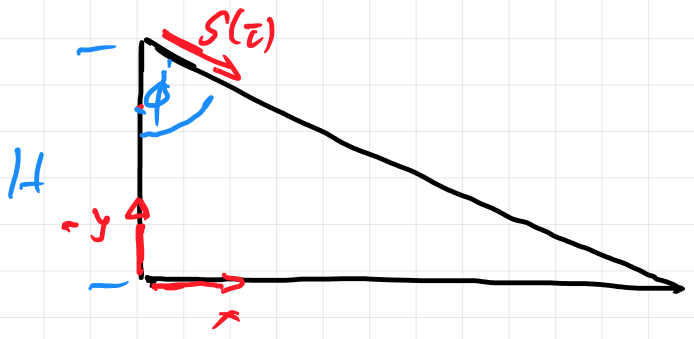Imagine a situation of a mass over the center of inclined planed which its slope in changing over time. The angle changes acording to the movement of forced damped harmonic oscillator. I want to know the position of the particle respect the center, so i use polar coordinates $x=r\cos\phi$ and $y=r\sin\phi$ when $\phi$ is the solution of forced damped harmonic oscillator $a\ddot\phi+b\dot\phi+c\phi=F\sin\omega t$ that gives me the angle of the slope.
The lagrangian is given by:
$L=\frac{1}{2}m(\dot r^2+r^2\dot\phi^2)-mgr\sin\phi$
On the other hand, I want to consider the dissipative force between the mass and the plane so the Rayleigh dissipation function is $R=-\mu Nv=-\mu mg\cos\phi \sqrt{\dot r^2+r^2\dot\phi^2}$
Then, the equation of motion is given by:
$\frac{d}{dt}\frac{\partial L}{\partial \dot r}-\frac{\partial L}{\partial r}+\frac{\partial R}{\partial \dot r}=0$
The angle $\phi$ is a constraint given by the damped equation and i know its value every time.
Finally the motion is given by:
$\ddot r-\mu g\cos\phi\frac{\dot r}{\sqrt{\dot r^2+r^2\dot\phi^2}}-\dot\phi^2r+g\sin\phi=0$
My question is if the approach I have done of the problem is correct.

